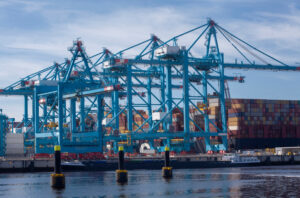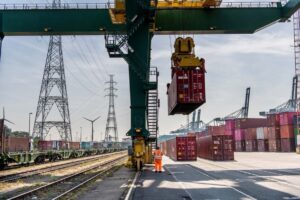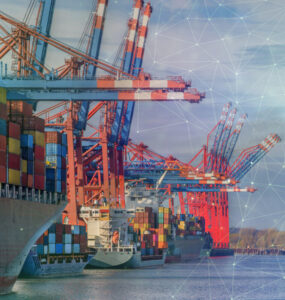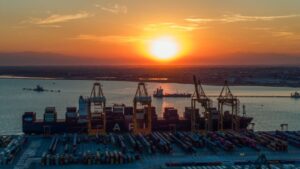A.P. Moller – Maersk’s Q2 results have revealed that Maersk Line has made a profit and that the company as a whole is still on track to achieve its end year results despite a cyber-attack severely affecting the container business.
A recovery in the container market and Maersk’s restoration of profitability has kept it on track to improve upon last year’s underlying profit, despite the cyber-attack causing an estimated US$ 200–300 million in damage to Q3.
Søren Skou, CEO of A.P. Moller – Maersk, said: “Maersk Line is again profitable delivering in line with guidance, with revenue growing by $1 billion year-on-year in the second quarter.
“The profit was $ 490 million higher than the same quarter last year, based on higher rates.
“In the last week of the quarter, we were hit by a cyber-attack, which mainly impacted Maersk Line, APM Terminals and Damco.
“Business volumes were negatively affected for a couple of weeks in July and as a consequence, our Q3 results will be impacted.”
Maersk Line expects that improvements in freight rates and partly increasing volumes will drive it to achieve more than $1 billion in underlying profit compared to 2016, when it experienced a loss of $384 million.
In Q2, the revenue of A. P. Moller – Maersk grew by 8.4% to $ 9.6 billion year on year.
This was mainly due to higher freight rates, which increased 22% compared to Q2 2016 and 7.6% compared to Q1 2017.
Freight rates increased by 36% on East-West trades and 17% on North-South trades.
Transported volumes increased by 1.7% compared to Q2 2016.
Volume still managed to grow on headhaul by 5.2% despite being a decrease on backhaul by 5.6% as backhaul cargo was less attractive on some trades.
However, Maersk still expects the global demand for seaborne container transportation to increase by 2-4% “in the upper end of the range”.
The underlying profit in Q2 improved from $134 million to $389 million with Maersk Line contributing with an underlying profit of $327 million.
Maersk said that post-tax impairments of $732 million related to Maersk Tankers and APM Terminals meant the reported result was a loss of $264 million.
Transport & Logistics remaining businesses, APM Terminals, Damco, Svitzer and Maersk Container Industry, still expect an underlying profit like that of 2016’s $ 500 million.
Transport & Logistics reported a combined revenue of $7.7 billion, which was an increase of 15% compared to same quarter last year, and an underlying profit of $442 million “which was improved significantly, in large part driven by higher container freight rates”.
Maersk has reported that its acquisition of Hamburg Süd is progressing as planned.
The transaction is still subject to regulatory approval, with an expected closing in Q4 2017.
Its agreement to divest Mercosul Line will also see the authority approval process begin in Brazil.
A.P. Moller – Maersk’s guidance for 2017 is subject to considerable uncertainty, not least due to developments in the global economy, the container freight rates, and the oil price.
Based on the expected earnings level and all other things being equal, the sensitivities for the rest of 2017 for four key value drivers are listed in the table below:










